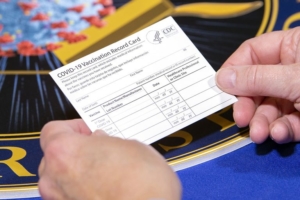Vaccine recommendations for those who recovered from COVID-19
 By NCL Director of Health Policy Jeanette Contreras
By NCL Director of Health Policy Jeanette Contreras
As the United States prepares for the release of a third COVID-19 vaccine, the Centers for Disease Control and Prevention (CDC) Advisory Committee on Immunization Practices (ACIP) meets to discuss further implementation considerations that will inform guidance for the vaccine rollout. At its March 1 meeting, ACIP dedicated a portion of the discussion to whether those who’ve recovered from the virus should still be vaccinated.
To date, there are more than 28 million confirmed cases of COVID-19, and experts estimate that the true number of individuals infected, yet not clinically confirmed, to be triple that amount, pushing the total prevalence to approximately 100 million. A recent study by the National Institutes of Health (NIH) indicates that those who’ve recovered will have a certain amount of natural immunity to the virus for up to eight months after infection, which is in line with the findings of a major British study published in early February, in which 88 percent of participants who previously tested positive for COVID-19 still had antibodies after six months.
Considering that the demand is greater than the supply, it is a difficult task to make recommendations for the equitable distribution of vaccines. For example, Spain issued recommendations that patients wait six months after diagnosis to get vaccinated if an individual is under age 55 with no major health complications. People over 55, or those with health risks that make them vulnerable to reinfection, are exempt from this delay and encouraged to be vaccinated.
Additionally, early studies are showing that immunity in individuals who had recovered and received one shot may be equal to or even exceed those not infected who had received two doses. According to the University of Maryland School of Medicine, a single dose of the Moderna or Pfizer mRNA vaccines would elicit an immune system response sufficient to provide comparable immunity to two doses in a non-infected person. On February 12, France became the first country to issue guidance recommending that people who have already recovered from COVID-19 only need to receive one dose of a vaccine, between 3 and 6 months after their infection.
Early research like this is informing public health policies in other countries. But the United States is known all over the world for its scientific rigor and reliance on randomized clinical trial data as a gold standard. In a recent blog, NIH Director Dr. Francis Collins reassures us that, should other studies support these early results, the experts at the Food and Drug Administration (FDA) and CDC will certainly consider whether one dose is enough.
The implementation of a one-dose vaccine would help to increase supply, however, the emergence of COVID-19 variants presents new challenges for curbing this pandemic. Current CDC guidance states that even if you’ve recovered from COVID-19, you should get vaccinated. Arming yourself with a vaccine will keep you and your family safe, and ultimately help to stave off new COVID-19 variants.





 By Nailah John, Program Associate
By Nailah John, Program Associate














